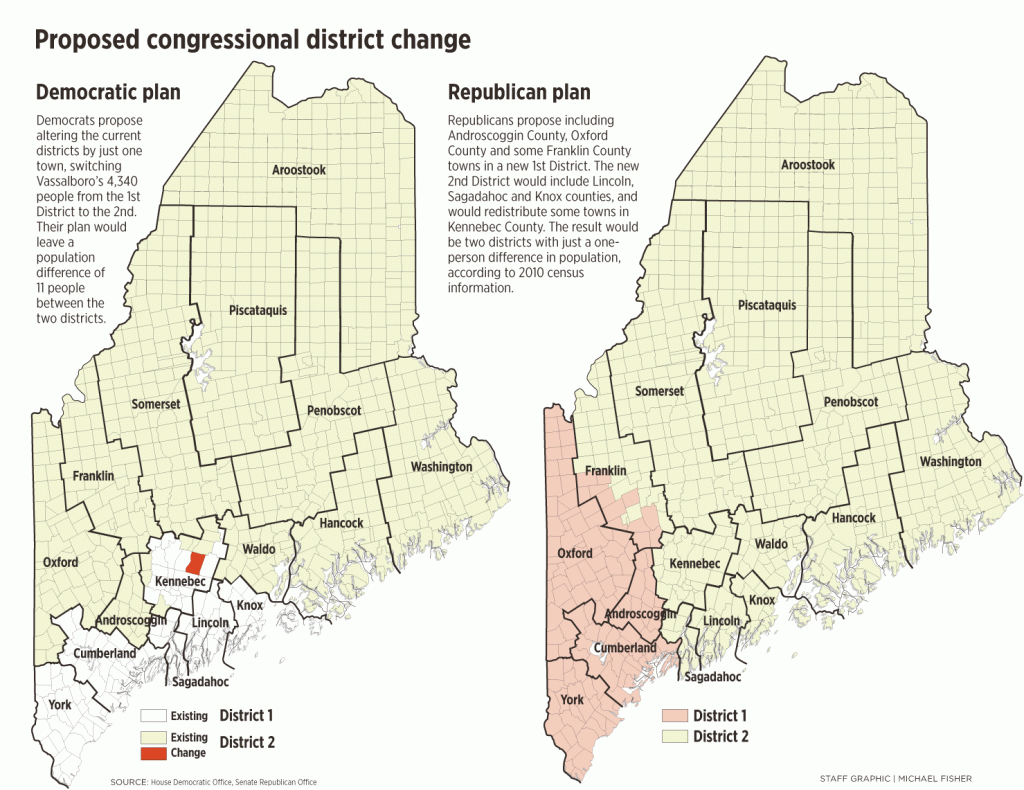The reapportionment issue would appear to be simple: Draw a single line across the state in as direct a manner as possible with an equal number of people on either side – or as close to equal as population permits.
Then, call one side “1” and the other side “2.” Label them “congressional districts” and let the people in them select candidates and vote for one of them to represent them in Congress.
It sounds as if it were easy enough that a computer could do it, and in fact in some states where independent commissions have taken over the task, computers do draw such political dividing lines in an essentially nonpolitical manner. In other states, however, the emphasis isn’t on the lines themselves, but on the fact that the process of drawing them remains a political one. And that is about as far from random as you can get – even though you might end up at the same solution by different means.
There are dozens, if not hundreds, of ways to draw the line, and you can’t blame politicians for applying political criteria when they are the ones doing the drawing. It’s only natural for them to try to calculate if a line drawn here would give them a particular advantage based on past voting practices, as opposed to a line drawn there that might tend to benefit their opponents.
And that’s what’s been going on with the 15-member commission tasked to divide the state under population figures produced by the 2010 census.
Both Democrats and Republicans have produced several state maps with various lines, with the GOP maps departing more substantially from the current line than the Democratic versions. As current law stands, the commission must submit one or more plans to the Legislature by Aug. 31, and it (or they) will be voted on in a special session on Sept. 27. The law requires a two-thirds margin for approving a plan, but Republicans, who control both House and Senate, say they may consider redrafting that to permit a simple majority to decide.
A public hearing is set for 9 a.m. today in Augusta to take input on the plans, but with few details available on alternatives, it’s not clear what the hearing will accomplish.
So, let’s focus instead on what the people of Maine deserve: a line that keeps the districts balanced while dividing as few political jurisdictions as possible – while at the same time not creating so much hard feelings between the parties involved that it becomes harder to do the people’s business in the future. That’s not too difficult, is it?
Or is it?
Send questions/comments to the editors.



Success. Please wait for the page to reload. If the page does not reload within 5 seconds, please refresh the page.
Enter your email and password to access comments.
Hi, to comment on stories you must . This profile is in addition to your subscription and website login.
Already have a commenting profile? .
Invalid username/password.
Please check your email to confirm and complete your registration.
Only subscribers are eligible to post comments. Please subscribe or login first for digital access. Here’s why.
Use the form below to reset your password. When you've submitted your account email, we will send an email with a reset code.